How to make tapioca pudding that’s irresistibly creamy, smooth, and full of flavor, without clumps or scorched pots. Follow this foolproof method for a comforting, nostalgic treat every time.
Learn how to make tapioca pudding at home with every spoon bringing back memories.
This beloved old-fashioned dessert continues to win hearts with its creamy texture and cozy flavor.
Loved by generations, tapioca pudding is more than just a treat; it’s a bowl of warm comfort that also happens to be naturally gluten-free and endlessly customizable.
Whether you enjoy it plain, topped with fruit, or infused with a touch of spice, it always delivers that satisfying, homestyle feel.
Ever wondered how to get that perfect creamy texture without clumps or burnt bottoms?
That’s where the right method, and a few kitchen tricks, make all the difference.
In this guide, we walk you through the steps to make tapioca pudding just the way it should be: smooth, rich, and perfectly sweet.
See different tapioca pudding recipes.
Table of Contents
- An Overview of Tapioca Pudding?
- Types of Tapioca Pearls and Which One to Use
- What You Need to Get Started
- How to Make Tapioca Pudding at Home
- Common Mistakes and How to Avoid Them
- Flavor Variations to Try
- Serving Suggestions and Pairings for Tapioca Pudding
- Final Word
- Frequently Asked Questions

An Overview of Tapioca Pudding?
Tapioca pudding is a creamy dessert made from chewy tapioca pearls suspended in a rich, custard-like base of milk, sugar, and eggs. The pearls made from the tubers of cassava give it a distinctive chewy texture that sets it apart from other puddings.
For more on its cultural variations and unique charm, see tapioca pudding: a classic dessert with a global twist.
Types of Tapioca Pearls and Which One to Use
Choosing the right tapioca pearl makes a big difference in how your pudding turns out.
Each type has its texture, cooking time, and flavor impact. Here’s what to know:
Small Tapioca Pearls: Best for Classic Creamy Texture
Small tapioca pearls are the traditional choice for homemade pudding.
They cook slowly and soak up the milk mixture well, giving you that signature chewy texture without overpowering the pudding.
If you want your dessert smooth with gentle bites of tapioca, this is your go-to.
Just remember to soak them for about 30 minutes before cooking.
You can find them online or in the baking or international aisle of most grocery stores.
Large Tapioca Pearls: Chewy with a Bolder Bite
Large pearls take much longer to cook and give a bolder, gummier bite. They’re more commonly used in bubble tea than in pudding.
If you use them, you’ll need to extend the cook time and possibly adjust your liquid.
The result will be less creamy and more chewy, with large pearls standing out in each spoonful.
Soak them for a few hours or overnight for a better texture.
Instant or Quick-Cooking Pearls: Fast but Less Flavorful
Quick-cooking tapioca pearls are pre-cooked and processed for speed. They’re great if you’re short on time but want a quick dessert fix.
However, they often lack the deep flavor and soft-chewy consistency of slow-cooked small pearls.
You don’t need to soak them, but be sure to stir constantly to prevent clumping.
These are easy to find in most grocery stores near boxed puddings or baking mixes.
Related Posts
Cassava Foods around the World
How to Make Yuca Cassava Fries
How to Make Crispy Cassava Sticks
Recipe for Boiled Cassava Root
Cassava and Pregnancy: Recommendations
Cassava Roots in Southeast Asian Cooking
Comparing Tapioca Pudding and Rice Pudding
What You Need to Get Started
If you’re making tapioca pudding from scratch, every ingredient you choose matters.
Here’s a closer look at what goes into this classic dessert and how to adapt it to fit your preferences.
Tapioca Pearls
Tapioca pearls are the heart of the pudding. They create the chewy bite that makes this dessert stand out.
Always soak or cook them properly to avoid a gritty or undercooked texture.

Milk
Milk gives the pudding its smooth, creamy body. Whole milk adds richness, while skim or plant-based milk makes it lighter.
Use plain, unsweetened milk to keep the flavor balanced.
Sugar/Condensed Milk
Sugar sweetens the dish and helps balance the egg and milk flavors.
Granulated white sugar is common, but you can experiment with natural alternatives if you want to reduce processed sugar.
In this recipe, I am using condensed milk because that is what I prefer fro myself.
Egg Yolk
Egg yolk thickens the pudding and gives it a custard-like feel. They also help bind everything so it doesn’t turn runny.
Always temper your eggs first, so they don’t scramble in the pot.
Vanilla
Vanilla rounds out the flavors and adds a warm aroma. Go for real vanilla extract or vanilla bean paste if you want a deeper, more natural taste in your finished pudding.
Choosing Between Small vs Large Tapioca Pearls
Small pearls cook quickly and give a smoother, creamier pudding. Large pearls need more time and create a chewy texture.
If you’re new to this, start with small pearls for easier handling.
Dairy-Free Substitutes: Coconut Milk, Almond Milk, Oat Milk
Coconut milk adds richness and depth. Almond milk keeps it light and neutral.
Oat milk gives a soft, naturally sweet taste. Stick with plain, unsweetened options to avoid unexpected flavor shifts.
Related: How Gluten-free is Tapioca?
Sweetener Options: Honey, Maple Syrup, Stevia
Honey brings a gentle floral note. Maple syrup gives a darker, earthy flavor. Stevia works if you’re cutting sugar.
Liquid sweeteners may thin the pudding slightly, so adjust cooking time if needed.
Ingredient Swaps for Allergies and Diets
For egg allergies, use a cornstarch mix or silken tofu. To keep it vegan, blend coconut cream and cornstarch.
Since tapioca is gluten-free, it’s already safe for gluten-sensitive diets by default.
- ½ cup of small tapioca pearls
- 2 ½ cups of milk or milk alternatives (such as almond or coconut milk)
- ⅓ cup of granulated sugar
- 2 large eggs
- 1 teaspoon of vanilla extract
- A pinch of salt
- Optional: Cinnamon, chocolate, coconut, or fruit flavors
Related: Easy Way to Make Cassava Flour Tortillas
How to Make Tapioca Pudding at Home
Bring back the comfort of old-school desserts with this easy tapioca pudding recipe. You only need a few pantry staples and a little patience to make it just right.
Choose the Right Tapioca Pearls
Start with the basics: the type of tapioca you use will shape the final result. Go for small or minute tapioca pearls; they cook faster and give a smoother, creamier texture.
Avoid large pearls, which take longer and can stay chewy. Look for brands with clean ingredients and no additives.
If you’re shopping gluten-free, make sure it’s labeled as such. A poor-quality pearl will ruin the consistency, no matter how well you cook the rest.
Related: Is Tapioca Good for You?

Rinse the Tapioca Pearls Before Soaking
Rinse the tapioca pearls with water and drain before adding fresh cold water to soak.
The duration of the soaking depends on the size of your tapioca pearls. Bigger pearls require more time soaked in water.
Soak for Better Texture
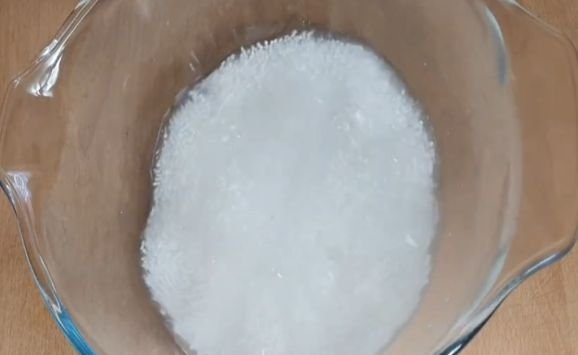
After rinsing the pearls under cold water, let them soak in water for about 2 to 3 hours.
This softens the pearls before cooking, helping them absorb flavor and cook evenly.
Soaking also prevents your pudding from becoming rubbery or clumpy. You can also use milk to soak. Use full-fat milk for a richer taste, or coconut milk if you’re dairy free.
But I am not going to soak in milk in this recipe. After soaking, if the water is in excess, drain to remain just enough to make the pearls wet, as you can see in the photo.
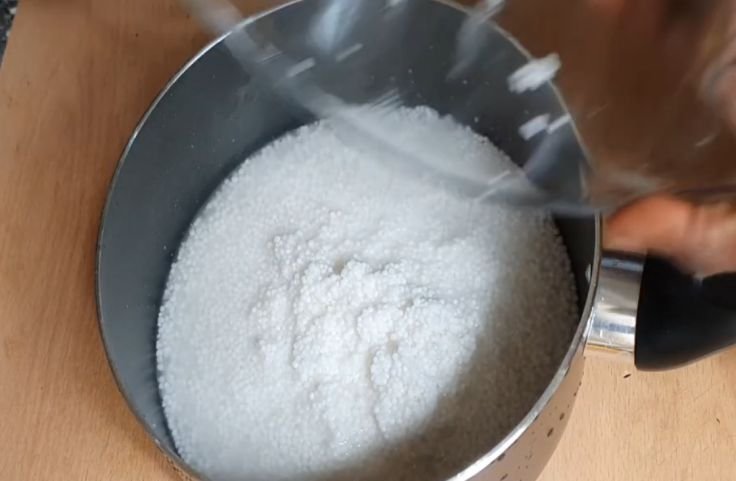
Pour in Your Milk
I am adding whole milk to the soaked tapioca pearls in the pot. You can also use coconut milk. Sometimes, I use it.
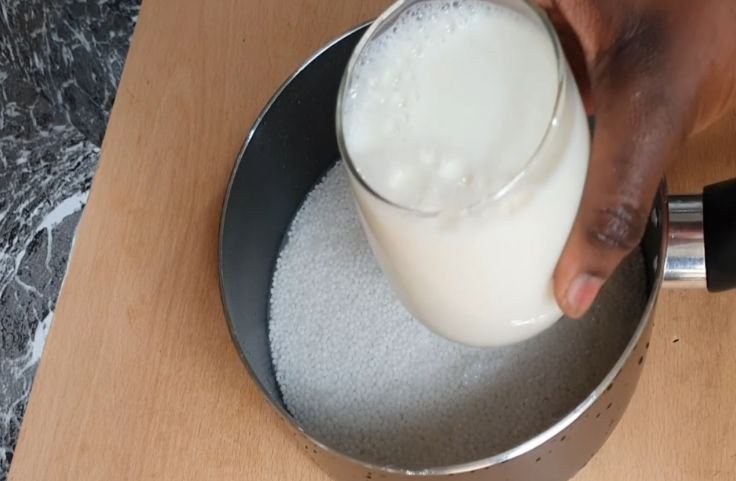
Add Vanilla Bean Paste
I am adding vanilla bean paste. This will give the pudding an excellent vanilla flavor. You can use alternative flavors.
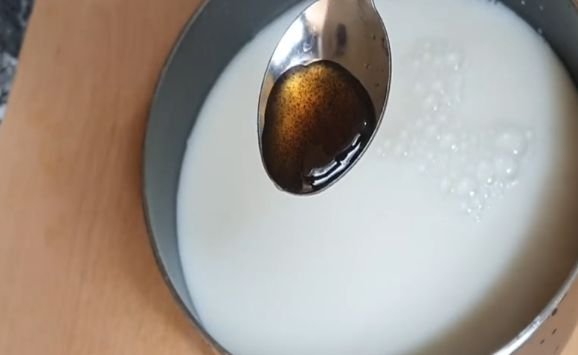
Cook on Low Heat and Stir Continuously
Cook the mixture over low to medium heat. Keep it gentle; boiling too hard can make the pearls tough or cause the milk to scorch.
Stir often to keep the bottom from sticking. When the mixture starts to steam and thicken slightly, it’s ready for the eggs.
Rushing this step can lead to uneven texture or burnt milk, so stay close and keep the heat steady.
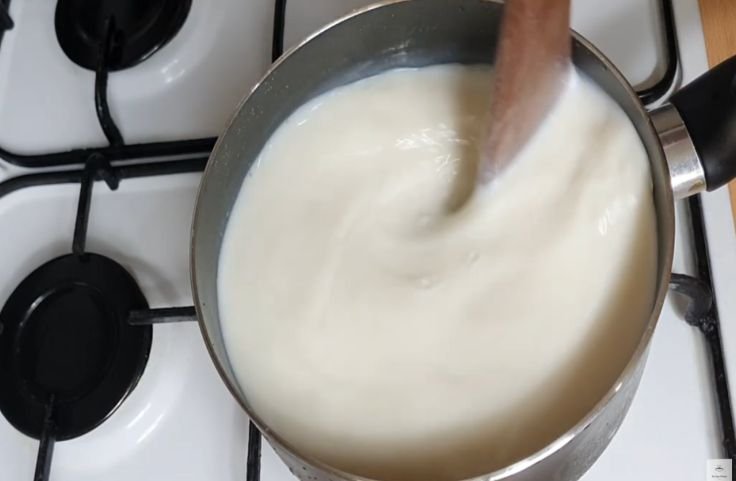
Temper the Egg Yolk Carefully into the Boiling Mixture
Crack your eggs and separate the yolks from the whites. Then slowly add a ladle of the hot milk mixture into the eggs while whisking nonstop.
This raises the temperature of the egg yolk slowly to match the temperature in the pot.
This prevents the eggs from cooking too fast. Once mixed, pour everything back into the saucepan and stir gently.
Tempering keeps your pudding smooth and creamy; no scrambled eggs here.
Don’t skip this step if you want that classic, custard-like finish.
Then pour the egg into the pot and you will see how it blends with the mixture smoothly.
Allow the mixture to cook on low heat for another minute. You will notice the pudding will start to thicken more.
After an extra minute, you can shut off the heat.
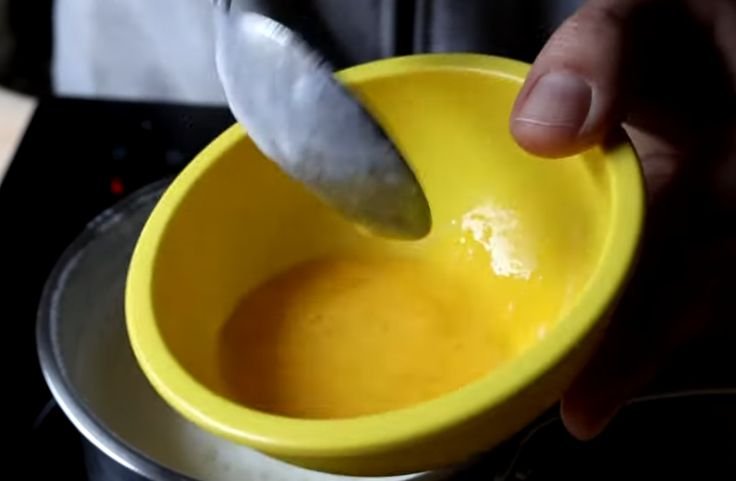
Whisk the Remaining Egg White
Beat the egg white until it turns white and pasty. You can add a spoonful of sugar or condensed milk to stabilize it.
The egg white should thicken in a minute and really look pasty like what you are seeing in the photo below.
This step is necessary for a nice creamy pudding.
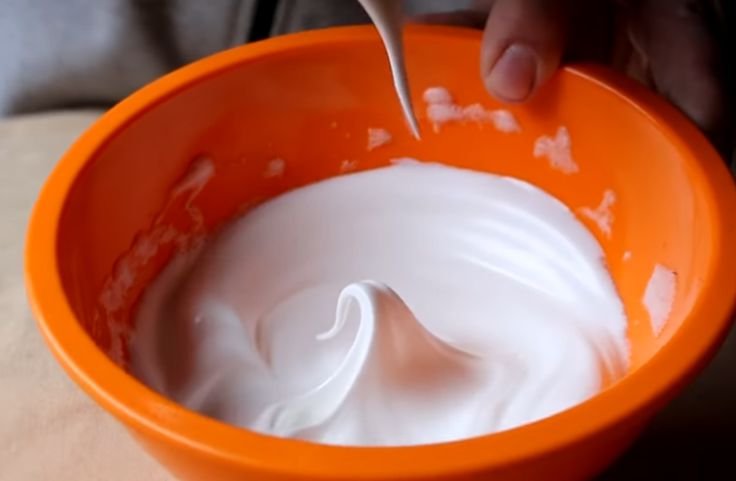
Condensed Milk Addition
Time to add the condensed milk to sweeten the tapioca pudding. Like I mentioned earlier, you can use sugar or other sweetening agents like maple syrup. But I prefer my condensed milk.

Pour Egg White into the Pudding
Pour the beaten egg white into the mixture and stir to mix properly. Add half at a time.
A lot of people miss this step when they make tapioca pudding, but it’s a secret to making it nice and fluffy.
And it is another way to make the egg white go to waste. Don’t worry if the eggs aren’t mixing properly.
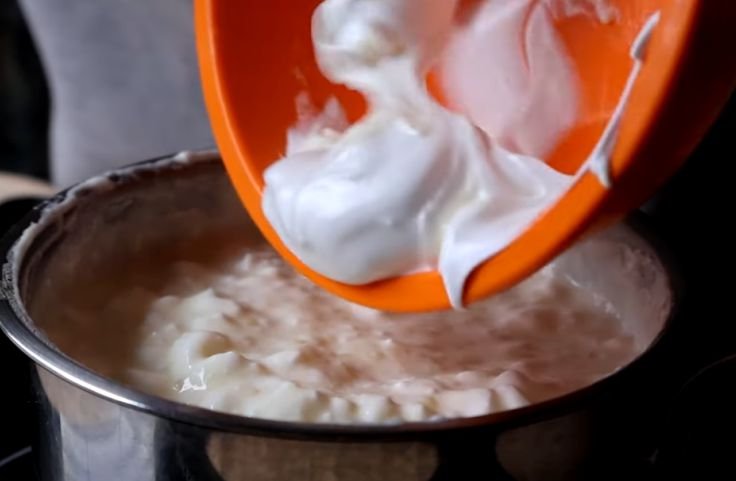
Allow to Cook One More Minute
Allow to cook one more minute on low heat to blend everything, and you can bring it down.
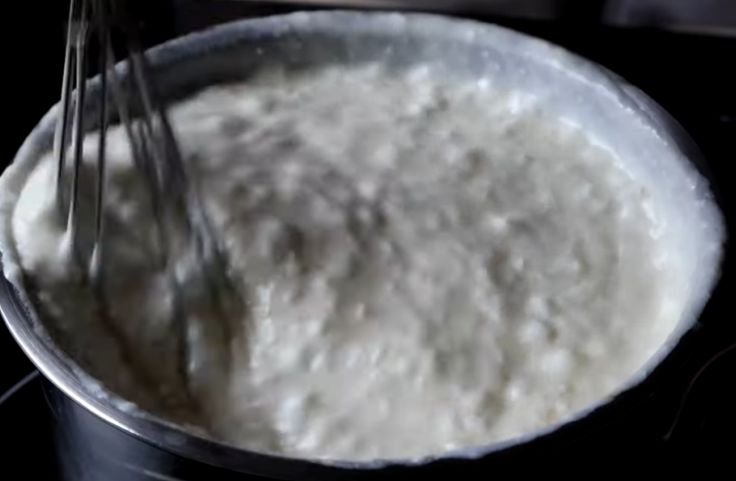
Allow to Cool
Allow the tapioca pudding to cool slightly before serving, or refrigerate for a chilled treat.
Experimenting with different flavor combinations can yield delightful results, making your tapioca pudding a versatile and enjoyable dessert.

Related: How to Use Tapioca Starch as a Thickener
Common Mistakes and How to Avoid Them
Tapioca pudding is simple to make, but a few common mistakes can ruin the texture or flavor.
Here’s how to fix them before they happen so your pudding turns out smooth and delicious.
Clumpy Pearls: Stir Often and Soak Before Cooking
If your pearls clump together, you probably didn’t soak them or stir enough during cooking.
Soaking helps them soften evenly, while stirring prevents them from sticking to each other or the pot. Keep the heat low and stir gently.
Curdled Eggs: Temper the Eggs Slowly
Scrambled eggs in your pudding mean the eggs were added too quickly or the heat was too high.
To avoid this, whisk a little hot milk into the eggs first. Then slowly stir the mix back into the pot while whisking constantly.
Overcooked or Dry Pudding: Watch the Timing
Overcooking dries out the pudding and makes the pearls too chewy. Keep an eye on the texture while cooking.
Turn off the heat once it thickens slightly. Remember, it continues to set as it cools down.
Watery Texture: Let It Cool Before Judging
If your pudding looks too runny, don’t panic. It may just need time to cool and thicken.
If it still feels watery after chilling, you may have used too much liquid or not cooked it long enough. Adjust next time for better results.
Related: Chocolate Tapioca Pudding
Flavor Variations to Try
You can switch up the flavor of tapioca pudding in simple but satisfying ways.
Coconut milk gives a creamy, dairy-free base with a light tropical taste. Chocolate lovers can stir in cocoa powder or melted dark chocolate for a richer dessert.
For something cozy, try chai spices or pumpkin spice blends. Just simmer them with the milk to infuse warmth into every bite.
If you’re avoiding dairy or eggs, plant-based milk and a natural thickener like cornstarch work well to create a smooth vegan version.
These variations let you tailor the pudding to your mood, diet, or season.
Whether you like it warm and spiced or chilled and chocolaty, the chewy tapioca pearls always deliver texture and comfort.
For more inspiration and full recipe links, see our roundup: Tapioca Pudding Recipes to Try Today.
Serving Suggestions and Pairings for Tapioca Pudding
Traditionally, tapioca pudding is served cold, providing a refreshing treat during warmer months. However, serving it warm can offer a comforting, cozy option perfect for chillier days.
To make the delicacy more interesting, consider adding a variety of toppings.
Fresh fruits like berries, mango, or bananas can introduce a fresh contrast, balancing the creamy texture of the pudding.
For a bit of crunch, chopped nuts such as almonds, pecans, or walnuts can be sprinkled atop.
Also, a dollop of whipped cream or a swirl of caramel can add richness and a decadent finish.
Pairing
Pairing beverages with tapioca pearl pudding can further improve the dining experience.
A cup of tea, whether it be a robust black tea or a fragrant herbal infusion, can complement the subtle sweetness of the pudding.
For coffee lovers, a rich espresso or a creamy latte might provide a delightful contrast.
If you prefer something more indulgent, dessert wines, like a luscious Moscato or a fortified Madeira, can harmonize beautifully with the pudding’s gentle flavors.
Beyond standalone servings, tapioca balls pudding can be integrated into more elaborate dessert creations.
Layering it with sponge cake and fruit can produce an elegant trifle, perfect for special occasions.
Alternatively, it can be used as a filling for tarts, offering a unique twist on the traditional pastry.
Related: Is Cassava Gluten-free?
Final Word
Tapioca pudding’s flexibility makes it an excellent addition to any dessert table, fitting seamlessly into diverse celebratory spreads from family gatherings to festive events.
Its global acceptance provides a broad canvas for creativity.
Whether enjoyed simply on its own, adorned with toppings, paired with your favorite beverage, or added to grander dessert recipes, its unique texture and flavor promise to delight and satisfy.
Frequently Asked Questions
Can you make tapioca pudding without eggs?
Yes, you can replace eggs with cornstarch, chia seeds, or arrowroot to thicken the pudding and create an egg-free, creamy version.
Why is my tapioca pudding runny or too thick?
Improper pearl hydration or incorrect cooking times can affect texture. Add milk to loosen or simmer longer to thicken as needed.
How do you know when tapioca pearls are cooked?
Tapioca pearls are ready when they turn translucent and lose their white centers. Taste-testing ensures the desired chewy texture is achieved.
Can you use instant tapioca in pudding?
Yes, instant tapioca works for quicker preparation. It requires no soaking but may yield a slightly different texture than traditional pearls.
How long does tapioca pudding last in the fridge?
Stored in an airtight container, tapioca pudding typically lasts three to five days in the refrigerator without losing flavor or texture.
Can you freeze tapioca pudding?
Yes, but freezing may alter texture. Thaw overnight in the fridge and stir well; add milk if it appears too thick or clumpy.
How do I reheat cold tapioca pudding?
Warm it gently on the stove or microwave, adding a splash of milk to restore creaminess and prevent it from becoming too dense.
References:
- https://www.joyofbaking.com/TapiocaPudding.html
- https://reesespecialtyfoods.com/recipe/ant-5/
- https://stayathomesarah.com/tapioca-pudding/
- https://www.heavenlyhomemakers.com/homemade-easy-tapioca-pudding

Chimeremeze Emeh is a writer and researcher passionate about Africa’s most transformative root crop—cassava. Through his work at cassavavaluechain.com, he explores the entire cassava industry, from cultivation and processing to its diverse applications in food, health, and industrial use.
He also writes for palmoilpalm.com, where he shares his extensive experience and deep-rooted knowledge of palm oil, covering red palm oil, palm kernel oil, and refined products. His work there reflects his lifelong connection to agriculture and his commitment to promoting sustainable value chains in Africa.
Driven by curiosity and purpose, Chimeremeze aims to shed light on how cassava continues to empower communities, strengthen food systems, and link traditional farming wisdom with modern innovation.

